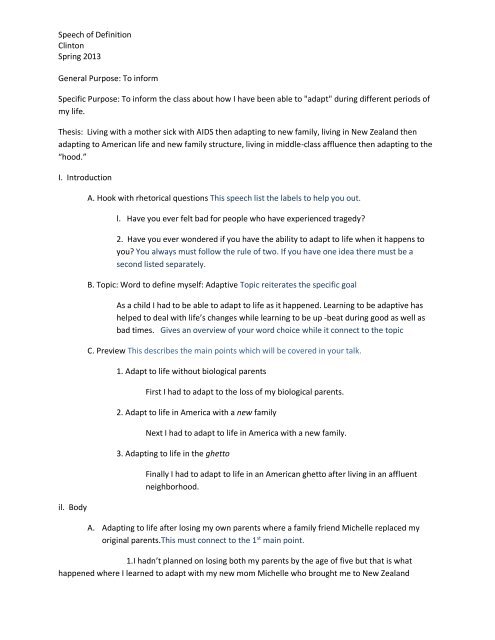
Step 7 – Addressing counterarguments can help speakers build their credibility, as it highlights their breadth of knowledge. Discuss each point in detail, allowing the audience to understand how the facts support the perspective. Keeping the audience in mind, determine which pieces of evidence can best help develop the argument. Step 6 – Utilize the evidence within the previously identified sources to construct the body of the speech. Step 5 – When constructing an introduction, keep the following questions in mind: Step 4 – Identify the audience and understand their baseline attitude about the topic. Revisit Step 2 if there is a lack of relevant resources. Step 3 – Locate credible and reliable sources and identify evidence in support of the topic/position. Step 2 – Select a good persuasive speech topic to accomplish the goal and choose a position. Step 1 – Identify the type of persuasive speech (factual, value, or policy) that will help accomplish the goal of the presentation. Incorporate the following steps when writing a persuasive speech: Much like a value speech, speakers provide evidence supporting their viewpoint however, they provide subjective conclusions based on the facts they provide. These speeches are highly subjective, so the argument cannot be proven to be absolutely true or false.Ī policy persuasive speech centers around the speaker’s support or rejection of a public policy, rule, or law. Speakers incorporate facts within these speeches however, the speaker’s interpretation of those facts creates the argument. Predictions incorporate the analysis of patterns to convince the audience that an event will happen again.Ī value persuasive speech concerns the morality of a certain topic. Questions of current existence involve the knowledge that something is currently happening. Historical controversy concerns whether an event happened or whether an object actually existed. Essentially, a factual persuasive speech includes historical controversy, a question of current existence, or a prediction: As such, the argument does not rely on the speaker’s interpretation of the information.

This is the only type of persuasive speech that exclusively uses objective information rather than subjective. The three main types of persuasive speeches are factual, value, and policy.Ī factual persuasive speech focuses solely on factual information to prove the existence or absence of something through substantial proof. Use comprehensive evidence the audience can understand.Ĭonfirm the evidence logically supports the argument’s claims and stems from credible sources.Įnsure that evidence is specific and avoid any vague or questionable information. Speakers can improve their logical appeal in the following ways: Logos appeals to the audience’s logic by offering supporting evidence. Utilize vivid imagery and sensory words, allowing the audience to visualize the information.Įmploy an appropriate tone, inflection, and pace to reflect the emotion. Incorporate analogies and metaphors that connect to a specific emotion to draw a parallel between the reference and topic. Select evidence that can elicit an emotional response. Tapping into the audience’s emotions can be accomplished through the following: Speakers who create an emotional bond with their audience are typically more convincing. Pathos appeals to the audience’s emotions. Use appropriate eye contact, volume, pacing, and inflection.

Logically structure the speech in an audience-friendly way. Select examples that connect to the specific audience. To establish credibility during a persuasive speech, speakers can do the following: Audiences are more likely to accept an argument if they find the speaker trustworthy.


 0 kommentar(er)
0 kommentar(er)
